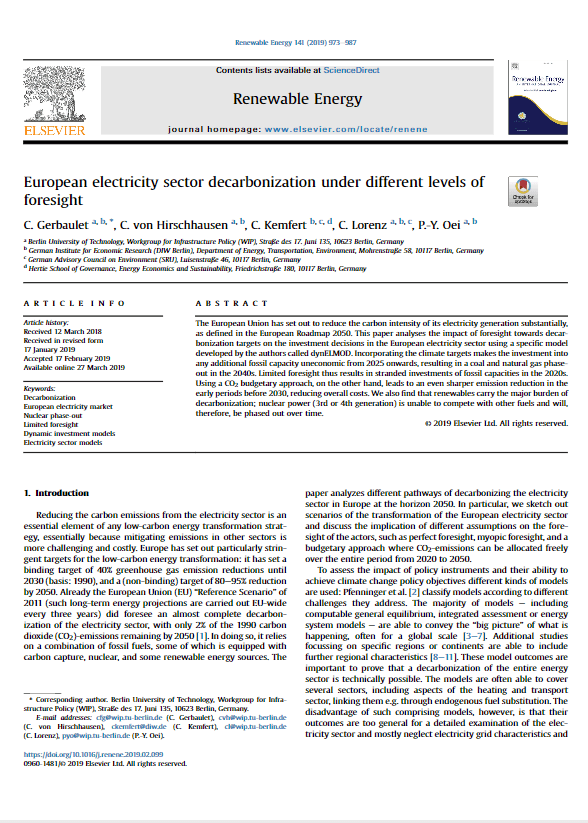European electricity sector decarbonization under different levels of foresight

The European Union has set out to reduce the carbon intensity of its electricity generation substantially, as defined in the European Roadmap 2050. This paper analyses the impact of foresight towards decarbonization targets on the investment decisions in the European electricity sector using a specific model developed by the authors called dynELMOD. Incorporating the climate targets makes the investment into any additional fossil capacity uneconomic from 2025 onwards, resulting in a coal and natural gas phase-out in the 2040s. Limited foresight thus results in stranded investments of fossil capacities in the 2020s. Using a CO2 budgetary approach, on the other hand, leads to an even sharper emission reduction in the early periods before 2030, reducing overall costs. We also find that renewables carry the major burden of decarbonization; nuclear power (3rd or 4th generation) is unable to compete with other fuels and will, therefore, be phased out over time.